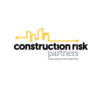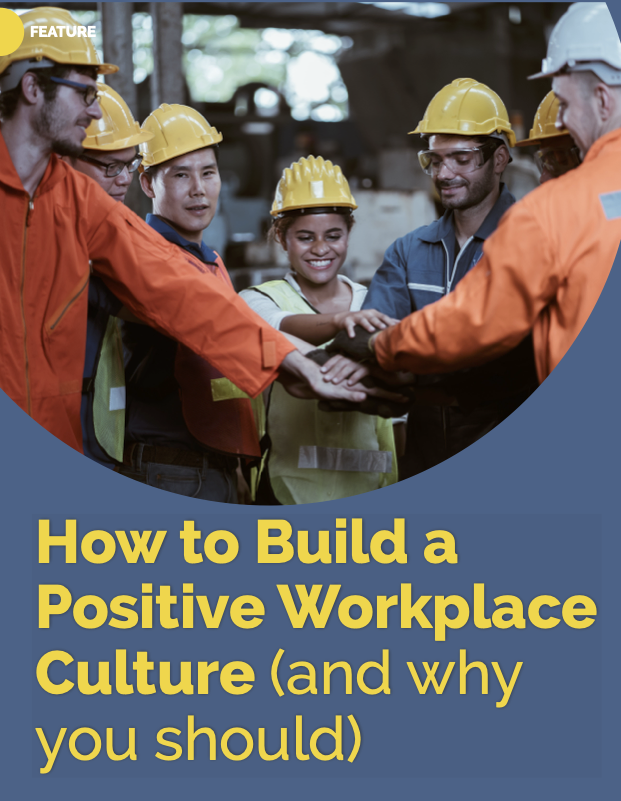-
 play_arrow
play_arrow
The real value of working in the building trades with Dave Ianucci, EAS Carpenters Chris Martin
-
 play_arrow
play_arrow
Director of Safety and suicide survivor shares how his experience is helping others in construction Building PA Podcast
-
 play_arrow
play_arrow
Construction companies win when their insurance broker is construction-centric! Building PA Podcast
- Home
- keyboard_arrow_rightHow to Build a Positive Workforce Culture (and Why You Should)
How to Build a Positive Workforce Culture (and Why You Should)

Construction organizations build great things for a lot of people. They also need to make the time to build something for themselves — a positive culture.

Positive Culture
It’s a positive culture that leads to positive results on job sites. Culture is not a human resources topic. It is a strategic and financial topic. Creating a positive culture will motivate workers, which will increase productivity and the bottom line. “We’re making people want to come to work,” said Greg Quandel, president and CEO of Quandel Enterprises in Harrisburg.
Creating culture starts with defining values for your organization or workplace, and then developing behaviors to carry out those values. Successful organizations foster inclusive environments that encourage open communication. Everyone is expected to respect one another. Everyone is made to feel valued and that they are contributing.
Leadership listens to everyone and provides opportunities for input. And leaders frequently share information, so everyone knows what’s going on, and what is expected of them. “I think just being transparent and open and honest with people goes a long way,” said Mike Butz, director of business development at Alvin. H. Butz Inc. in Allentown.
Active Positive Culture
At Butz, a family-owned company for six generations, the culture is one of family. “Having a positive culture and making sure your employees are happy is the foundation of what our company was built on,” said Butz, the sixth generation to be involved in the business.
Organizations must actively create a culture by articulating behaviors. “Do it by design rather than by default. Otherwise, it will happen by default,” said David McGlennen, president of Impact Leadership Consulting near Pittsburgh. It takes building a team of the right people and reinforcing the culture with them repeatedly through regular communication and coaching. Leaders must take charge and hold themselves and others accountable for meeting the cultural goals.
“Culture is all about leadership,” McGlennen said. The effort will pay off. “If we have a great environment for our people to work in, they are going to be happier, they are going to be more productive and they are going to be more focused on those behaviors that are driving success,” McGlennen said. “When we have happy employees working on those success behaviors it is just going to lead to the bottom-line results.”
When employees are in a good culture, “You want to do your best. And if you have people around you who are doing the same thing, that just breeds success. It flows to the bottom line.”
Written Mission Statements and Values
Some companies focus their culture on written mission statements and values. “If you live them and your team lives them, it’s very contagious,” Quandel said. At Quandel Enterprises, the company’s mission is: “Lead. Make a Difference. Build a Better Future.” The goal is to create an atmosphere that not only allows employees to lead, make a difference and build a better future on the job, but personally and for their families and communities, too.
That means offering opportunities for employees to advance and further their careers by learning new skills and taking on new responsibilities. It means making time to participate in events such as speaking to high school students about what it’s like to work in the construction industry. Building a positive culture means recognizing every team member as an individual, not just as an employee.
Team-Building Events
Successful organizations hold frequent team-building events to make time for people to get to know each other, and their families. By building camaraderie, they are building trust that translates to better coordination and communication on the job. “We celebrate a lot,” Quandel said. Birthdays. Holidays. Significant achievements and meeting milestones on projects.
Architecture firm Crabtree, Rohrbaugh & Associates in Mechanicsburg, has several events annually.
“The fast-paced style of the industry that we’re in doesn’t allow for a lot of down time. That’s why those breaks are important,” said principal and managing partner Tracy Rohrbaugh. The office closes for a day trip with employees and their families to Hersheypark. A trick-or-treat night is held for employees’ children. There’s a Thanksgiving dinner. A cornhole contest. Even a field day in the parking lot, with events such as a three-legged race.
“Some of us do come out of that with some bumps and bruises,” Rohrbaugh said. “That friendly competition is what I think draws people closer together.” And it translates to delivering successful projects.“Being in architecture and construction is very collaborative. It’s something where you have to have good communication skills and I think the things that we do, the fun events, people get to communicate on a personal level and they’re not just talking about drawings and plans.”
Taking Accountability
Creating a positive culture also means being accountable to that culture – which could require getting rid of team members who don’t fit in. “It really takes leadership to be able to have the courage to be make tough choices,” McGlennen said. “It’s not an easy part of culture but, it is important. It’s like being a surgeon. Sometimes, you have to take things out in order to be able to heal and move forward.”
A strong negative leader in the field can destroy culture, Quandel said. Organizations must recognize that some employees may need to be moved to a different position.“Maybe the right person is on the bus but in the wrong seat,” Quandel said. “If in the end of the day you can’t get them in the right seat, they have to exit the bus.”
On an episode of the Building PA Podcast, Bob Dresser, president of Strategic Executive Consulting in Mechanicsburg, discussed his experience of turning around a poor culture on a job site that was over budget and behind schedule. He said after spending two days on the site, it was apparent “this place needs a hug.” The workforce was depressed. Workers didn’t know what they were doing and why. They didn’t understand what they were building or the purpose of the asset.
Communication was improved so workers realized their purpose. Bulletin boards were used to explain what each crew was doing each day, and what they already had done. A happy, competitive atmosphere was born.Safety improved and a culture of family created. Three or four months later, productivity was up 12%. Organizations with positive cultures find it easier to develop and retain a workforce. Word gets out that it’s a good place to work. “People will flock to you and stay with you,”Dresser said on the podcast. Clients will notice, too. Culture is a “huge differentiator,” he said. “Clients will want to embrace you.”
Collaboration and Communication
While each organization has its own culture, that’s not good enough in the construction industry, where much of the work occurs collaboratively with other organizations.When they come together on a job site, they must develop a shared culture for that site. That requires someone to take charge and spell out the behaviors and expectations that will lead to success. Alvin H. Butz Inc. holds a kickoff meeting with all participants and stakeholders at the beginning of each project. “You establish those goals, you get as much collective buy-in as possible,” Butz said.
“Sometimes, there’s some difficult conversations that have to be had at beginning of projects in order to get people to buy in. Sometimes, some people have different opinions on things, but we can work hard to understand that everybody has the same goals on the project. They want it to be on schedule, they want it to be a financial success,” he said. “It just sets the project up for greater success and moving forward if everybody’s on the same page from the beginning.”
“We’re all working toward the owner’s goals,” added Rohrbaugh. “It’s just common sense but I think when you start off a project and say let’s all work together, we’re going to have challenges but through
open communications we will get through this and that’s how you end up with a great project.”
Implementing a Positive Culture
Leaders need to repeatedly stress the behaviors that are part of an organization or job site’s culture. That could be done by articulating them during morning meetings or toolbox talks. They can be communicated through digital newsletters and videos on company apps.
For example, what does it mean to “speak straight?” “How do we have a speak straight conversation? It’s not just going off on a tirade and exploding. A speak straight conversation actually moves the conversation forward. So, we need to know how to do that,” McGlennen said. Some of his clients give employees pocket-sized “way” cards, as in “it’s the way we do things around here,” that summarize the behaviors that make up their company’s culture.
Once a positive culture is created, people will adapt to it and embrace it. “There’s more to it here than just going through your job every day. It’s something that we have to continually think about and work on,” Butz said.

Originally published in the Keystone Contractor Magazine.
Building PA Podcast - © 2023

